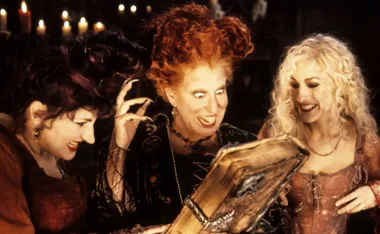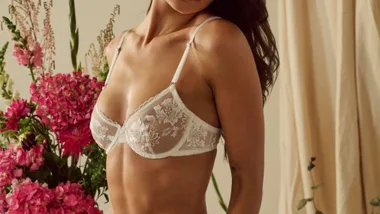When in St Petersburg there’s nothing quite so decadent as to slip into Yeliseyev’s food hall on Nevsky Prospekt, buy a 300gm tin of chilled caviar ($80) and eat it by the spoonful just up the road in Arts Square.
For something more delicate, opt for golden Oscietra; a tonic that enlivens the senses and helps a hangover. Then there’s sevruga, an intensely dark, almost luminous caviar that’s reputed to add sparkle to a love affair.
Caviar, it has to be said, is one of the city’s great bargains, costing only a third of the price it does Down Under. And a park bench in leafy Arts Square, under the steady gaze of the statue of Russian poet Alexander Pushkin, is the perfect place to enjoy it.
If you’re feeling a little jaded, choose beluga caviar; its opalescent grey-blue beads are said to clean the palate and lift the spirits like vintage champagne.
A stone’s throw away is the Winter Palace, former home of the tsars, who proclaimed that caviar from the sturgeon could be eaten only by members of the imperial family. Anyone found ignoring the decree was imprisoned or put to death.
Ninety years after the fall of the tsars, caviar is making a comeback. In the Caviar Bar of the Grand Hotel Europe on Arts Square, men in Zegna suits buy beluga for $200 a pop — three swallows and it’s gone — that’s equal to twice the average Russian’s monthly wage.
Sharp-suited men such as these could easily stroll into Yeliseyev’s and save themselves a small fortune. But that’s missing the point. Known as blatnoi, they flaunt their wealth as a badge of high office within Russia’s vast black market economy. In St Petersburg, one sees them at all the best addresses.
It’s fascinating to watch them arrive at the Grand Hotel Europe, as I did 18 months ago. Like any international airport, the hotel lobby has a metal detector through which everyone is required to walk.
Every time, without fail, the blatnoi would trigger the alarm. And every time, they would stand aside and shrug their shoulders, before slipping a hand under their jacket to retrieve a gun. Once it was deposited in the hotel safe, they were free to enter.
Yet, it’s a different story down town on Moscow Square (seven stops south of Nevsky Prospekt on the Metro’s Blue Line). Here a monumental statue of Lenin, one of two left standing in the city, dominates a square the size of two football fields.
Nearby ragged pensioners can be often found attempting to sell their last possessions — a few cheap heirlooms, laid out on the grass, or a war medal or two.
After working all their lives under the communist system, this generation now faces abject poverty, their state pensions rapidly evaporating with the onset of capitalism.
Founded over 300 years ago by Peter the Great, St Petersburg was one of the great metropolises of Europe.
Adorned with palaces that matched Versailles, here the ruling Romanovs made their cousins, the Windsors of London, look suburban. Their family feuds, scandalous affairs, secret marriages, coups d’etat, regicide … all ensured that there was never a dull moment at the Romanov court.
Their palaces were the setting for some of St Petersburg’s greatest dramas, and they remain the city’s most glamorous monuments.
By the River Neva runs the colossal facade of the Winter Palace, built by Peter’s daughter, the Empress Elizabeth. A town house for the Romanovs, the palace contains no fewer than 1500 rooms and 117 staircases.
Today it houses the Hermitage Museum, one of the world’s great art collections, started by Elizabeth’s daughter-in-law, Catherine the Great.
Their homes are not confined to the city. To escape the summer heat, the Romanovs built great parks and palaces.
The grandest is the Peterhof, a thunderous statement of the tsars’ power and untouchability. In its Baroque staterooms, mirrors on facing walls reflect a sense of infinite space, as if the Romanovs believed they would go on for ever.
Located just 800km south of the Arctic Circle, St Petersburg may be famous for its freezing winters when ice skating on the Neva is all the rage, but during its sultry midsummer, the sun barely sets.
During the festival of the White Nights, its residents forsake their beds and party all night. You’ll find them drinking vodka on boats cruising the city’s canals, eating borsch and blinis in restaurants on Nevsky Prospekt, the city’s Champs-Elysées, or dancing the night away at one of the grand palaces, dressed in 19th century costumes under crystal chandeliers the size of cars, almost as if the tsars were back in town.
Climb the 262 steps to the colonnade under the great dome of St Isaac’s Cathedral’s and the views of the city will keep you mesmerised for hours. From here, you can see why St Petersburg is the new buzz city in tourism.
A 90-minute boat trip (from the Anichkov Bridge on the Fontanka River) will cover most of the canals, cross the Neva, pass by the Winter Palace, to the Peter and Paul Fortress on the north bank.
Watch out for the historic 1900 cruiser Aurora, which fired the shot of the 1917 Russian Revolution.
Walk along the Griboedova canal and you will pass several beautiful pedestrian bridges, one supported by giant lions, another by cast-iron griffons with golden wings and a thousand reflections of shabby, but still handsome, 18th century buildings.
Eventually you’ll arrive at the Church on Spilled Blood, a riot of colourful onion domes and mosaics, architecture more reminiscent of medieval Moscow than baroque St Petersburg.
Everyone should explore Nevsky Prospekt and Gostinyy Dvor, the city’s 18th century bazaar; Yeliseev’s food hall, the elegant glass-covered Passazh shopping arcade and the incredibly kitsch Versace store (opposite Yeliseev’s), an old palace lodge with its original stone statues of scantily clad Roman legionnaires standing guard outside.
Today Nevsky Prospekt looks like a temple to conspicuous consumption, but it wasn’t always the case. During the 900-day Siege of Leningrad, when Hitler’s armies surrounded the city between 1941 and 1944, when the bombs rained down and the food ran out, people ate cats, dogs, glue, shoes and, in some cases, corpses.
Officially, 632,000 citizens died, though the true figure is probably much higher.
So spare a thought for the old men and women selling summer berries and war medals on Moscow Square. Some of them are the last surviving children of the great siege.
Indulge yourself with a tin of caviar by all means, then make your way Moscow and share your good fortune with some real Russian heroes.
TRAVEL FACTS
A grand tour
Insight Vacations has an eight-day Easy Pace Russia guided tour (from $2350; flights not included) that visits St Petersburg for four days, including visits the Winter Palace, St Isaac’s Cathedral, Fortress of Peter and Paul and Peterhof Summer Palace, and three days in Moscow that includes visits to the Red Square, the Kremlin Fortress, Lenin’s Mausoleum, St Basil’s Cathedral and the metro station, known as “the palaces of the people” with their chandeliers and marble columns. The tour also includes train travel “Soviet-style” between the cities and stays at the St Petersburg Crown Plaza hotel and the Hilton Leningrad Skaya in Moscow. Contact your local travel agent.
Tips
Beware of pickpockets when strolling the city streets. Ensure all valuables are hidden, including cameras. Use money belts and avoid handbags. Wear comfortable shoes as the palaces, historic squares and other historic sites require a lot of walking.
In the northern winter (November-April), take warm clothing suitable for Arctic conditions, such as padded ski jackets and pants, and layers of insulated clothing which are easy to peel off when indoors. In summer, take light clothing, such as cotton trousers, shorts, T-shirts with a fleece for colder snaps at night.
Visas are $85 (single entry tourist). Visit: www.sydneyrussianconsulate.com
Local currency: 31 Roubles = $1.
Visit stpetersburg.com
Getting around
The best way to get around the centre of this historic city is to walk. For longer trips, hire a private car and driver or a taxi with a meter at your hotel (avoid flagging down taxis on street); or take the metro — it’s cheap, clean and safe, has some beautiful historic stations, and is the deepest subway in the world.
Normally trains arrive every 2-3 minutes, with slightly longer waiting periods early in the morning and late at night. Most stations open at about 5:45am and close between midnight and 0:30am. Ensure your city guide book has a metro map.
Newsletter conversion description. Get the latest in your inbox.









-(1).png?resize=380%2C285)






.png?resize=380%2C285)






































.jpg?resize=380%2C285)
.png?resize=380%2C285)
.jpg?resize=380%2C285)



.jpg?resize=380%2C285)









.png?resize=380%2C285)












